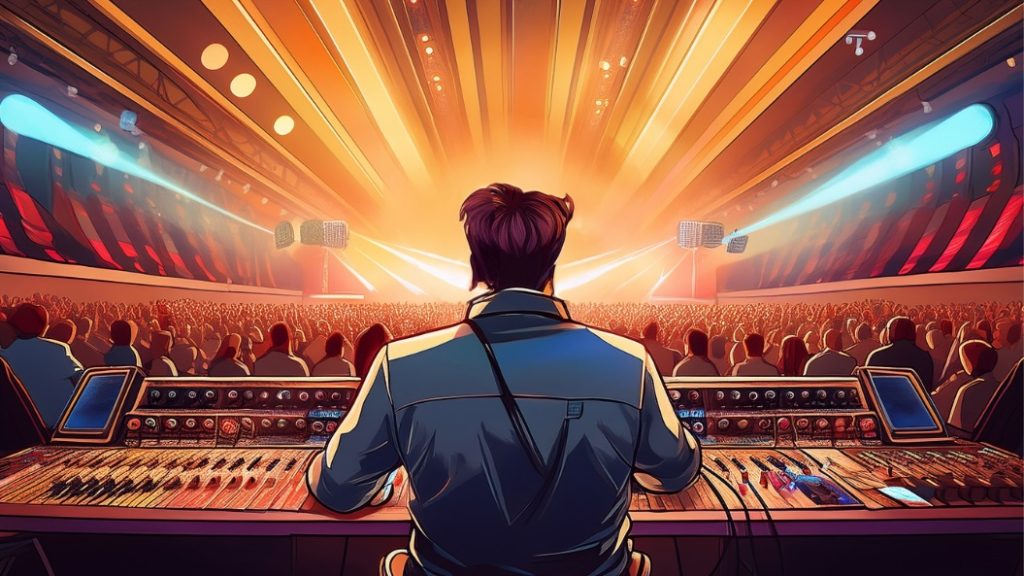
A few nights ago, I mixed for the first time on a new generation of digital mixing consoles from an established manufacturer, and, unfortunately, I was quite disappointed.
It started with the show file, or lack thereof. Never having used the desk and not recognizing ahead of time that I didn’t have a file for it, I neglected to prep a show file at home. That’s on me.
I have the manufacturer’s file converter software on my laptop, so at the gig I attempted to convert a file from another desk. Except that I had an early version of software that didn’t support the new desk. No biggie, I’ll download the newest version from the manufacturer’s website. Have you ever tried to do a download using the Internet at a State Fair, where the backstage connection is about as useful as a space heater at the beach? Lucky for me, my monitor engineer had a recent version of the conversion software on his laptop and did the conversion for me.
I’m not new to file-conversion software, so I expected that the routing to and from my effects rack would need sorting—not unusual, especially when the source file was for a desk with different architecture. I was able to clean it up quickly, but the routing wasn’t recalled with my scene at show time so I had to rebuild the effects rack on changeover. Fun (not).
Furthermore, I discovered that when I recalled my scene, outputs from some of the effects were double-patched to multiple inputs, so I had to clean up that, as well. Not what I had hoped for given a 20-minute changeover from the support act (we were sharing the entire P.A., including the mixing console). It turns out that the console defaults to “safe” for the FX racks, and that’s why my settings weren’t recalled. A trip to the scene memory manager to turn this setting off remedied the problem. After the fact. Bummer.
I’m intimately familiar with the virtual processing racks provided by this manufacturer in their older desks, and I can typically access the effects library with two or three taps. The UI in this new desk seemed clumsy to me, requiring more gestures, and, when you recall a preset from the FX or EQ library, you’ll get no confirmation that the preset was actually loaded, leaving you with the option of closing the library list and viewing the settings in the processor to see if they’ve actually been loaded. Grrrrr.
I’m not shy about mixing on a console I’ve never used. In fact, I generally welcome the challenge, so I didn’t give a second thought to this one. The desk is available with several different-size work surfaces. This one had two 12-fader bays plus a master section.
Mix Live Blog: Minivan Madness
But unlike many of the smaller console work surfaces, this one doesn’t have a set of dedicated “selected channel” controls. There was the usual sole “touch and turn” control that just about every desk has these days, and there was one rotary encoder per channel strip. When you tap a channel processing block, the encoders are automatically mapped to control the parameters in that block. Twelve encoders work out nicely for a four-band parametric EQ—which has 12 parameters.
Unsurprisingly, the encoders can control just about any channel parameter, such as gain, pan, send level, compression parameters, etc. But what bugged me was that something as simple as setting the pan on a channel required a minimum of two moves: toggle the encoder to pan, then adjust the encoder. And then toggle back to gain if you suspect that the guitar player might change their stage volume (that never happens).
Discover more great stories—get a free Mix SmartBrief subscription!
I also found that the touchscreen on this particular desk, on this particular night (outdoors, 87 degrees at 9:15 p.m.), did not respond to my touches on the first or second tap. Sometimes I had to tap an “X” three or four times simply to close a window. Grrrrrrr.
We’ll give Round 1 to the desk. It did sound great, which makes me want to go for Round 2. When the opportunity presents itself, I’ll have another go at it in the hopes that (a) I’m able to request the larger work surface, and (b) having used it once prior, I might be able to pick up the workflow that the designers were attempting to lay down.

